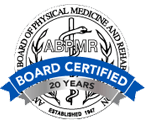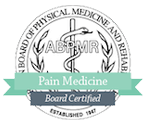A headache, also known as cephalalgia, is a continuous pain in the head that affects the head, eyes, temples, nose, skin or the entire head. Headache pain can be either sharp or dull. Headaches are classified as either primary or secondary. Headaches, such as migraine headaches, do tend to run in families. Approximately 20 percent of children and adolescents experience headaches. Of the people who develop headaches, 70 percent of them are women. More than 45 million people in the United States experience headaches. More than half of them are migraine headaches. Headaches are the most common reason for days lost at work and school.
Types of Headaches
Primary headaches are further categorized into types. There are four types of headaches:
- Tension, the most common primary headache
- Migraine, a vascular headache that is related to changes in the brain
- Combination, a combination of a tension and migraine headache
- Cluster, a severe, less common form of headache
Secondary headaches are the result of a medical condition. They can include some of the following:
- Sinus headache
- Hormonal headache
- Encephalitis
- Concussion
- Glaucoma
- Flu
- Stroke
Causes of Headaches
Physical Triggers
- Poor posture
- Sitting in one position for too long a period of time
- Sleeping in a position that places the head, neck and spine out of alignment
- Physical exertion
- Teeth grinding
- Jaw clenching
- Skipped meals
- Alcohol use
- Illegal drug use
- Arthritis
- Medication
- Hormonal changes
- Infection
- Hypertension
Environmental Triggers
- Food allergies
- Sensitivity to food additives
- Excess consumption of caffeine
- Changes in barometric pressure
- Exposure to noise or light
Psychological Triggers
- Emotional conflicts
- Lack of sleep
- Depression
- Grief
- Fatigue
Diagnosis of Headaches
There is no reason to suffer from a headache. The first step in treating your headache symptoms is to visit your physician for a physical examination and an evaluation of your symptoms. Your physician may conduct diagnostic tests, such as:
- CT scan
- MRI
Based on your test results, your physician may refer you to a specialist who focuses on headaches.
Complications of Headaches
Often, a headache may be a symptom of a more serious condition. Contact your physician if the headache you are experiencing is associated with any of the following:
- Severe pain
- Occurs after a strike to the head
- Gets increasingly painful
- Occurs during physical activity
- Occurs every day
- Headache pattern is different
- Accompanied by fever
- Change in vision
- Loss of consciousness
- Pain increases when chewing
- Nausea or vomiting
- Stiff neck
- Pain in the ear or eye
- Convulsions
- Disorientation
- Absences from work
- Prevents you from participating in activities
Treatment and prevention of Headaches
Keeping a headache journal with information about the following will provide information as to why a headache occurs:
- Date
- Time of day
- Weather conditions
- Diet
- Sleeping pattern
- Emotional state of being
If a headache occurs with more frequency, perhaps three or more times each month, preventative measures should be taken. Some of these measures may include:
- Biofeedback
- Meditation
- Massage therapy
- Exercise
- Medication
- Elimination of trigger foods




